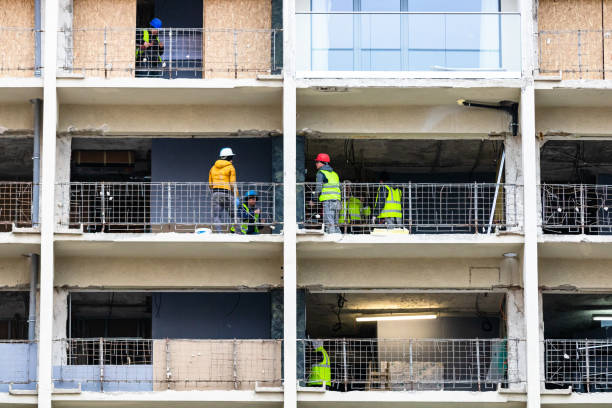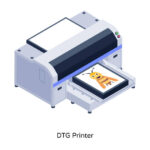Construction workers are the backbone of every building project, from high-rises to homes. Their skill and resilience shape the world around us. From laying foundations to finishing details, success depends on both experience and the right tools. This post explores a day in a construction worker’s life, highlighting the essential tools that keep projects moving.
Essential Hand Tools
Hand tools are the foundation of construction work. Before the hum of saws or the whirl of drills, every worker reaches for reliable, time-tested equipment.
Hammers
A hammer is more than just a hammer on a construction site. The classic claw hammer is perfect for driving and removing nails. A sledgehammer provides brute force when breaking up masonry or setting beams. Framing hammers, with their heavier heads and straight claws, excel in heavy-duty framing and demolition tasks. Each type serves a purpose, making it vital for workers to choose wisely depending on the job at hand.
Screwdrivers
Screwdrivers may seem basic, but they’re indispensable. Flathead and Phillips screwdrivers handle most standard fasteners. Precision screwdrivers are crucial for delicate electrical or finish work. When speed and convenience are priorities, many workers turn to multi-bit screwdrivers, reducing the need to carry multiple tools.
Wrenches
Wrenches keep nuts and bolts secure. An adjustable wrench, also known as a crescent wrench, replaces an entire set by adapting to different bolt sizes. Fixed wrenches, including combination or socket varieties, offer better grip and torque for stubborn fasteners. Both types are usually present in every worker’s tool belt.
Measuring Tools
Accurate measurements ensure structural integrity and quality. Tape measures remain timeless for their portability and ease of use. Levels, whether bubble or digital, confirm that surfaces are even. Laser measures have risen in popularity, allowing for more precise readings over greater distances with the push of a button.
Power Tools
Power tools have transformed construction, increasing speed and efficiency while reducing physical strain.
Drills
Drills tackle everything from boring holes to driving screws. Corded drills are known for high power and endurance, ideal for non-stop tasks. Cordless drills, on the other hand, offer unbeatable mobility and convenience, especially for jobs where power outlets are scarce. Impact drivers supply extra torque for large lag bolts or stubborn fasteners, making them favorites for framing and decking crews.
Saws
No construction site is complete without a variety of saws. Circular saws make quick, straight cuts in wood and sheet goods. Jigsaws are masters of curves and intricate shapes, perfect for finish carpentry or fitting materials around obstacles. Reciprocating saws, equipped with aggressive blades, are essential for demolition or pruning branches on landscape-heavy projects.
Grinders
Angle grinders are indispensable for cutting, grinding, and polishing metal or concrete. Their versatility allows workers to switch between cleaning up a weld and cutting through rebar in seconds, making them an essential addition to any toolkit.
Safety Equipment
Staying safe on site is as important as getting the job done right. Safety equipment protects workers from a variety of hazards they face every day.
Hard Hats
Hard hats are required by law on construction sites. They protect workers from falling debris and impact injuries. Regulations ensure they meet strict standards for shock absorption and penetration resistance, helping to eliminate preventable injuries.
Safety Glasses
Eyes are vulnerable to flying dust, shavings, or chemical splashes. Safety glasses and goggles provide the first line of defense. Anti-fog coatings and wraparound styles are preferred, increasing visibility and comfort during long shifts.
Gloves
Task-specific gloves protect hands from blisters, cuts, and harsh materials. Heavy-duty leather gloves are staples for handling rough surfaces, while lightweight, dexterous gloves are perfect for electrical and finish work.
Protective Footwear
Steel-toed boots offer vital protection against crush injuries and punctures while supporting feet during long hours on uneven ground. Many brands now blend durability with comfort, offering slip-resistant soles for added safety on slick surfaces.
Advanced Technology
Technology is reshaping construction, ushering in a new age of efficiency and accuracy.
GPS and Surveying Equipment
Accurate measurements mean fewer mistakes. GPS-enabled surveying tools locate boundaries, elevations, and reference points faster and with greater precision than traditional methods. These advances streamline everything from site layout to grading.
Computer-Aided Design
Computer-Aided Design (CAD) software allows blueprints and plans to move from the office to the jobsite with seamless detail. Tablets and rugged laptops keep workers updated with real-time drawings, reducing errors and keeping construction on schedule.
Drones
Drones offer a bird’s-eye view, invaluable for large-scale site monitoring. They photograph, map, and even inspect hard-to-reach areas, saving time and enhancing safety during routine checks.
Two-Way Satellite Radio
Communication is key on any site. Two-way satellite radios, often supported by satellite connectivity, guarantee instant contact between workers, supervisors, and suppliers, even when mobile phone signals fall short.
Daily Routine
Working construction follows a well-honed daily rhythm designed for safety and productivity.
Morning Briefing
The day starts early, often before sunrise. Teams gather for a safety briefing and discuss goals, assignments, and site-specific concerns. Reviewing the latest blueprints ensures everyone is aligned.
Task Execution
Once work begins, construction workers move through their assigned tasks, selecting the right tools for each job. Whether framing a wall, pouring cement, or wiring a junction box, focus and efficiency are paramount.
Problem Solving
Unexpected challenges are part of the territory. Weather changes, material shortages, or design adjustments require quick thinking and adaptability. It’s not unusual for workers to brainstorm solutions and shift gears on the fly, relying on experience, communication, and the right tech.
Safety Checks
Frequent safety inspections prevent accidents. Supervisors look out for hazards, ensure equipment is maintained and workers follow protocols. This constant vigilance keeps the site safe and compliant.
Challenges and Solutions
Working in construction is physically and mentally demanding, but experience and innovation light the way through.
Physical Demands
The work is tough. Heavy lifting, repetitive motion, and variable weather test every worker. Many employ stretching routines, ergonomic lifting techniques, and hydration to stay healthy. Rest and recovery are also crucial between shifts.
Weather Conditions
Outdoor work exposes crews to heat, rain, cold, and wind. Layered clothing, sun protection, and waterproof gear help workers adapt. Scheduling flexibility is also key when extreme weather threatens safety or progress.
Equipment Maintenance
A tool is only as good as its upkeep. Routine maintenance—from sharpening blades to lubricating moving parts—is part of a worker’s weekly checklist. Well-maintained tools improve safety and performance, reducing the risk of breakdowns at crucial moments.
Conclusion
Next time you pass a building site, take a moment to appreciate the skill, effort, and tools behind each project. From the hum of power tools to the focus on safety checks, these workers show just how much goes into creating the spaces where we live, work, and play. While construction tools evolve, the skill and dedication of those using them remain constant.


